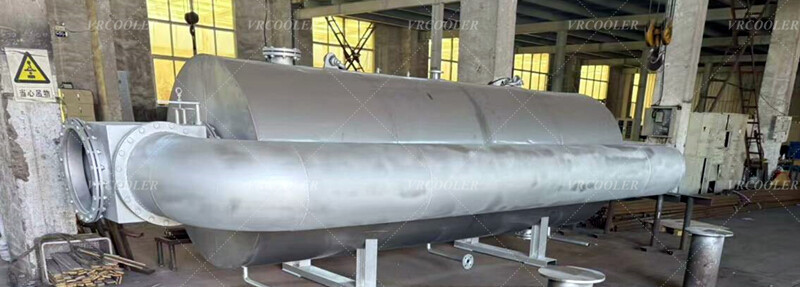Industrial Gas Cooler For Power Plant
Working Principle
Inter-wall Heat Transfer: Hot industrial gases flow in the tube bundle, cooling medium (usually water or air) flows in the reverse direction in the shell bundle, through the tube wall as heat transfer medium, heat is transferred from the high temperature industrial gases to the low temperature cooling medium, so as to realize the cooling of industrial gases.
Reinforcement of heat transfer mechanism: the folding plate makes the cooling medium in the shell course scour the tube bundle transversely for many times, destroying the boundary layer formed by the gas and the cooling medium near the tube wall, improving the degree of turbulence of the fluid, increasing the heat transfer coefficient, and thus enhancing the cooling efficiency.
Features
High-efficiency cooling: by optimizing the tube bundle arrangement and folding plate design, the heat transfer coefficient can be greatly increased, effectively realizing rapid cooling of industrial gases and meeting the process requirements of power plants.
Compact structure: able to provide a large heat transfer area in a limited space, covering a small area, suitable for power plants and other places where space is relatively tight.
High-temperature and high-pressure resistance: able to withstand the high-temperature and high-pressure environments of industrial gases in power plants, ensuring the safe and stable operation of the equipment under harsh working conditions.
Strong adaptability: customized design can be carried out according to different industrial gas properties, flow rates and cooling requirements, and suitable tubes, tube diameters, tube bundle arrangements and shell range structures can be selected to meet various complex cooling requirements.
Convenient maintenance: the tube bundle can be disassembled, which is convenient for cleaning, overhauling and replacing the heat exchanger tubes, reducing the difficulty and cost of equipment maintenance and improving the service life of the equipment.
Application Scenario
Turbine Exhaust Cooling: Used to cool the high-temperature steam discharged from the turbine, condensing it into water, recycling water resources while improving the efficiency of the turbine and reducing energy consumption.
Generator cooling: cooling the hot air generated during the operation of the generator, ensuring that the temperature of the generator is within the normal range, improving the performance and service life of the generator.
Boiler tail gas cooling: cooling the high-temperature tail gas produced after boiler combustion, reducing the temperature of the tail gas, facilitating the subsequent environmental protection treatment processes such as dust removal, desulfurization, denitrification, and reducing pollutant emissions.
Compressed air cooling: cooling the compressed air in the power plant, removing the water and impurities in it, improving the quality of compressed air, and providing a stable and reliable air source for pneumatic equipment and control systems.


